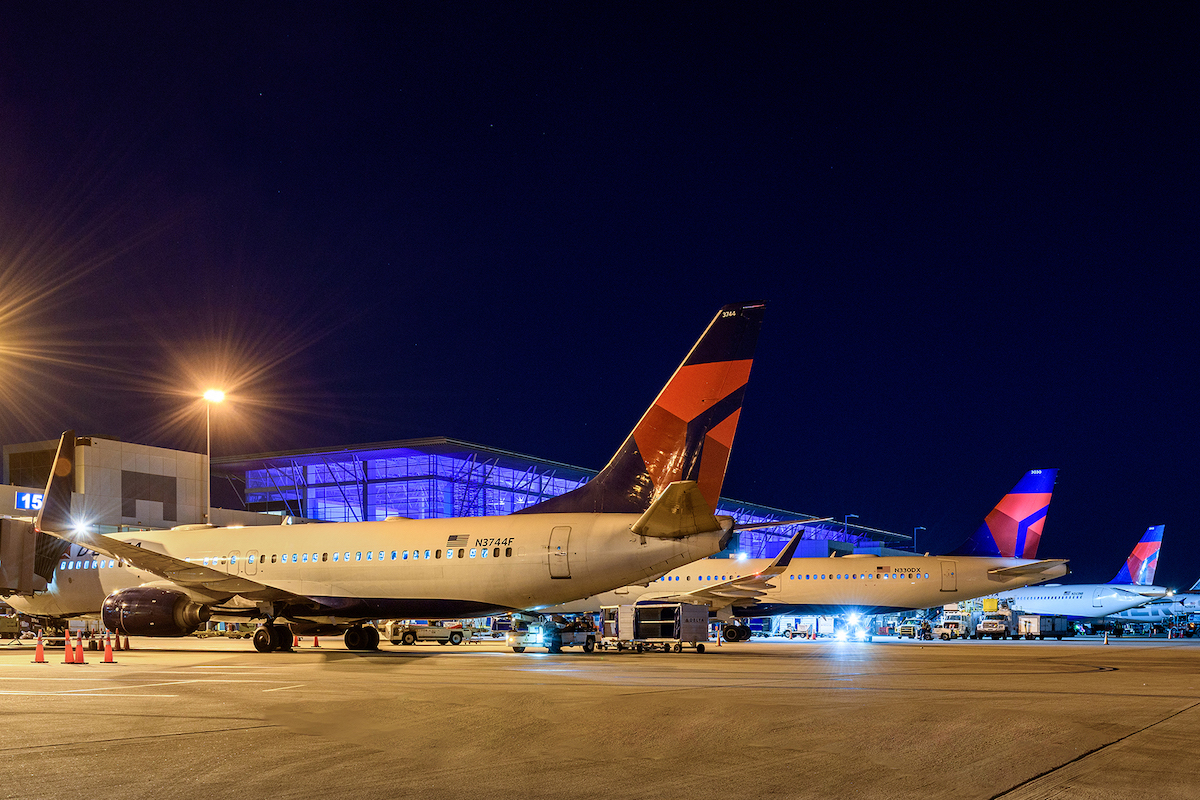Delta Air Lines is investing in its Austin focus city with two new routes this fall, but the carrier still lags well behind American Airlines and Southwest Airlines by market share in the red-hot Texas capital.
The Atlanta-based carrier will connect Austin-Bergstrom International Airport to Las Vegas and Orlando daily with Airbus A320s from October 9, according to Cirium Diio schedules. Both routes are new for Delta in Austin. And they follow frequency additions on seven existing Delta routes from the Texas capital that will see it operating up to 39 daily departures from Austin by August, up from up to 31 a day in May.
Austin is one of the fastest-growing cities in the U.S., and home to one of the world’s fastest-growing “all-star” airports last year. The population of the metro region grew a remarkable 28.9% from 2010 to 2019, U.S. Census data show. And that was before the city saw an influx of people who moved during the pandemic that lifted the Austin region’s population to roughly 2.4 million people in 2021.
That growth has, understandably, attracted airlines. Copa Airlines — Austin’s first Latin American carrier from outside of Mexico — began flights to Austin in June; KLM and Virgin Atlantic landed last year; and Hawaiian Airlines in 2021, Cirium Diio schedules show. And Lufthansa and Spirit Airlines both entered the market in 2019. But the real storymaker is American, which launched a big expansion in Austin in 2021. It will offer nearly double the number of seats from the airport this year as it did in 2019.
The Austin airport handled 21.1 million passengers last year, 22% more than in 2019, airport data show. And this April, passenger numbers were already 29% above pre-pandemic levels.
In terms of airline share, Southwest — long Austin’s largest carrier — has a 39% share of seats at the airport in July, airport data show. American was second with a 23% share, and Delta third at 13%.
All this growth on airlines other than Delta in Austin begs the question: Is Delta’s expansion too little too late?
The carrier has considered Austin a “focus city” since the mid-aughts. That label implies additional flights but also other nebulous investments like more local corporate sales staff and marketing. However, it has never served more than just its hubs and other focus cities nonstop from Austin. Delta also considers Cincinnati and Raleigh-Durham focus cities, having dropped the label from Nashville and San Jose, Calif., during the pandemic.
“We’ve really selected markets that have a lot of youthful presence, strong corporate standing, and where we’ve seen above-average growth for the industry,” Delta network executive Amy Martin said of its focus city strategy in 2018.
The new Las Vegas and Orlando routes add new leisure options to Delta’s offering in Austin. But neither adds something new in the Austin market. Las Vegas is served by four airlines — American, Allegiant Air, Spirit, and Southwest — and Orlando by three — American, Spirit, and Southwest — nonstop from the Texas capital, Diio schedules show. Delta will be, respectively, the fifth and fourth airline on each route. And if the airline wants to become the preferred carrier in Austin, it is still a long way from matching and setting itself apart from American and Southwest’s offerings there.
“Having the competitive network is what gets [travelers] in the door for entry into our frequent flyer program, credit card acquisitions, all of these things,” American Senior Vice President of Network Planning Brian Znotins said at the Skift Aviation Forum in November. “We’re seeing those benefits in Austin now as we build up the schedule, so we’re very happy with it and we’re wild for Austin.”
A Delta spokesperson said the new Austin routes are in response to customer demand and where they want to fly. They noted that Las Vegas and Orlando are among the top markets for travelers from Austin.
Delta aims to fully recover to its 2019 capacity levels by the end of the year. The focus for 2023 is on restoring its core hubs to 2019 levels. That refers to Atlanta, Detroit, Minneapolis-St. Paul, and Salt Lake City, places where it generally generates its highest profit margins. During an investor event at the end of June, neither Austin nor its focus cities were mentioned by airline leadership.
It does not help that the Austin airport, after the significant growth of the past few years, faces significant facility constraints. The terminal has 34 gates, nine of which opened in 2019, and all of which are allocated to airlines or shared by foreign carriers. The airport acknowledges the need for more space to handle growth, and is in the process of adding three gates to the western end of the terminal by 2027. An at least 10-gate midfield concourse is also planned in the future.
An Austin airport spokesperson said the airport was “excited” that Delta would offer “more options” to travelers.





